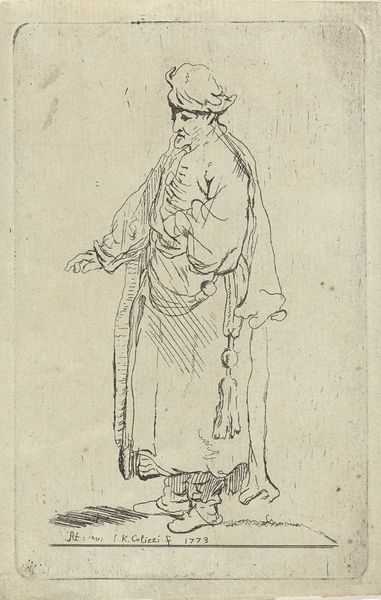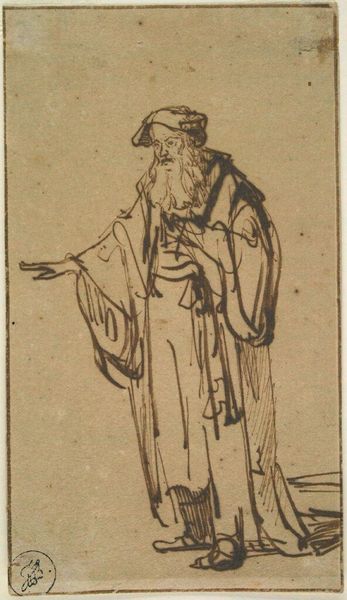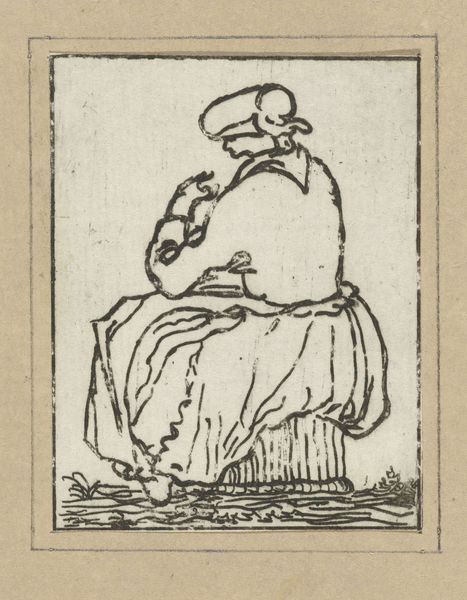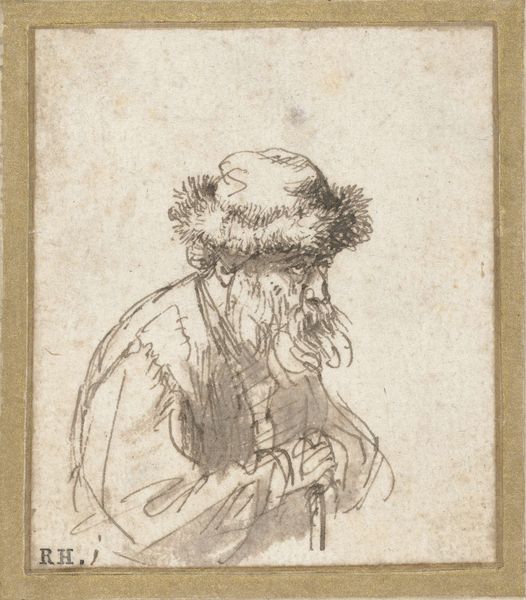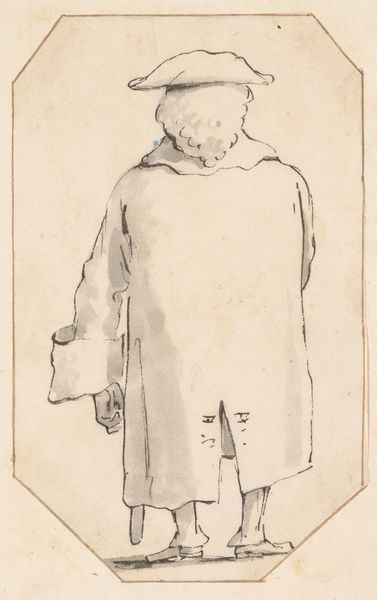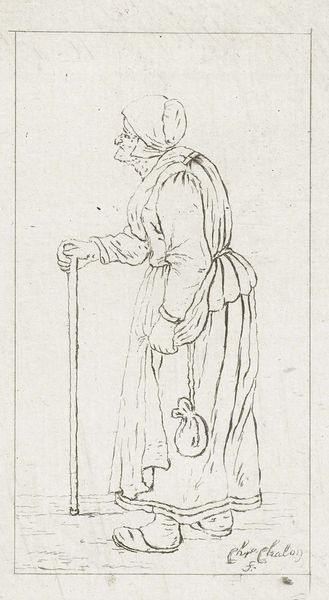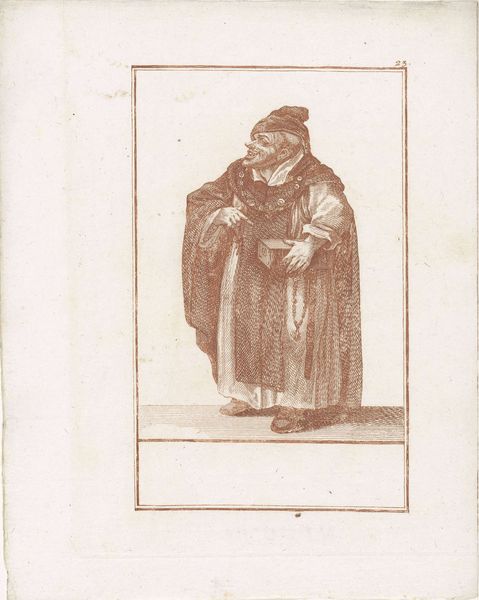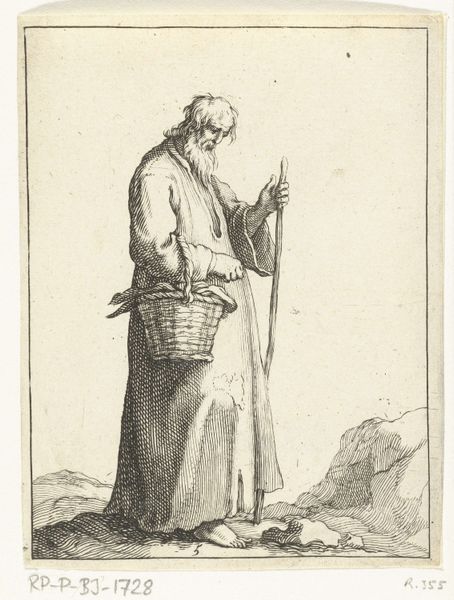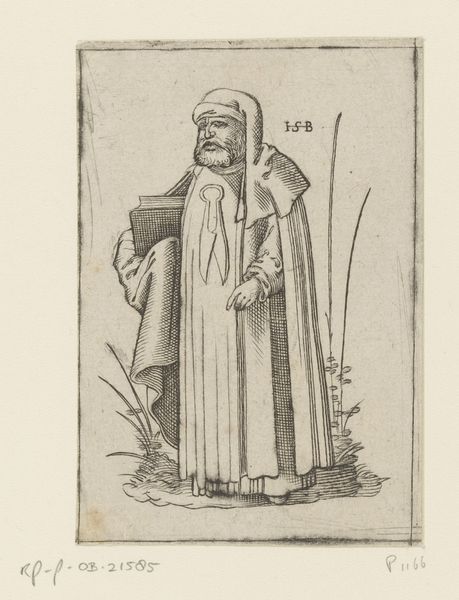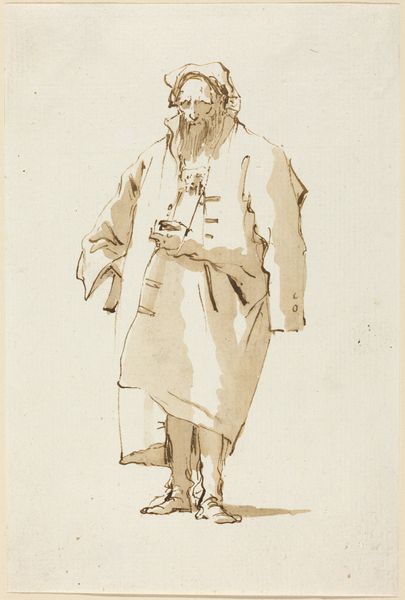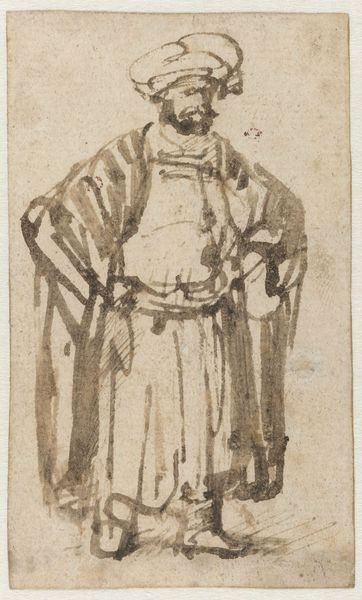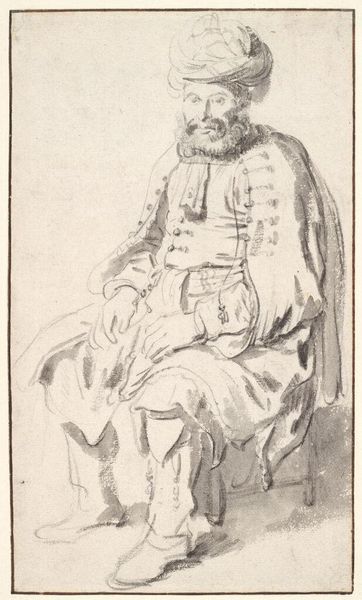
drawing, ink, pen
#
portrait
#
drawing
#
baroque
#
old engraving style
#
ink
#
sketchwork
#
pen-ink sketch
#
sketchbook drawing
#
pen
#
genre-painting
Dimensions: height 103 mm, width 73 mm
Copyright: Rijks Museum: Open Domain
Curator: Welcome. Let's turn our attention to "Monnik," a pen and ink drawing, made sometime between 1728 and 1789, by Jacob Hoolaart. Editor: Initially, I'm struck by its melancholic quality. The figure's downward gaze, combined with the spare, almost skeletal linework, evokes a sense of profound introspection, if not sorrow. Curator: The piece adheres, albeit in a sketch-like manner, to certain conventions of Baroque portraiture. The careful rendering of the monk's garments, the placement of the rosary beads. Hoolaart's deployment of line directs our eye. Note how the darker areas define the edges. Editor: Right, and I read that clothing differently. The monk's coarse habit speaks to a rejection of worldly materialism. We see it repeated throughout history. The emphasis on simple cloth signals solidarity with the poor, with those living outside structures of power and privilege. His rosary could also function beyond pure piety; perhaps it's a tangible symbol of resistance in times of political oppression, linking the individual to a network of shared belief. Curator: The simplicity is powerful, absolutely. The cross hangs asymmetrically which adds a note of the artist's individuality. Yet, there's something universal in the way Hoolaart captures the planes of the face, isn't there? The monk seems like an archetype. Editor: I see that, yet, I also wonder about the historical context, right? Was Hoolaart commenting on the church's role, critiquing religious institutions or perhaps sympathizing with those marginalized by power? I'd like to know more about Hoolaart's social position, his audience. That sort of social biography could enrich our understanding, Curator: While further contextual research is interesting, the internal relationships within the image, as a structured object, speaks volumes on its own. It exemplifies the style and offers insights into Hoolaart’s craft. Editor: Agreed. The piece provides us much to ponder about power, poverty, faith, and doubt, all made intensely personal through Hoolaart's rendering. Curator: It's quite affecting, regardless. The emotional weight, combined with such stark visual elements, invites further looking. Editor: Yes, the dialogue this image generates is quite resonant and important for any contemporary discussion of faith, power, and art.
Comments
No comments
Be the first to comment and join the conversation on the ultimate creative platform.
